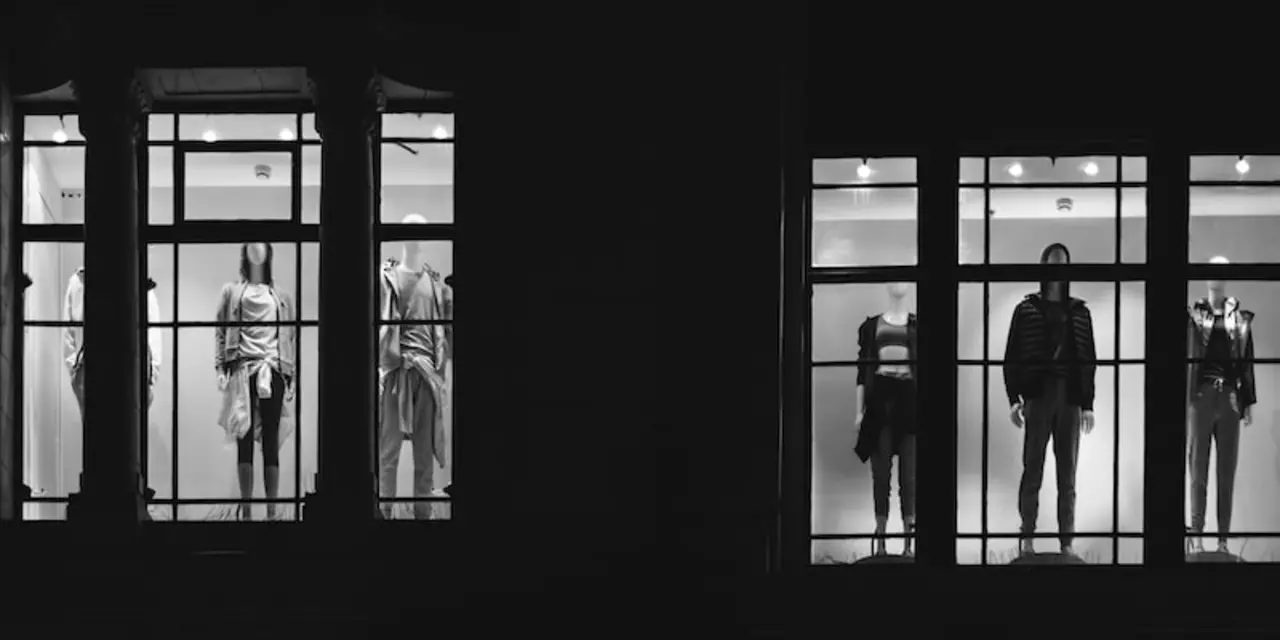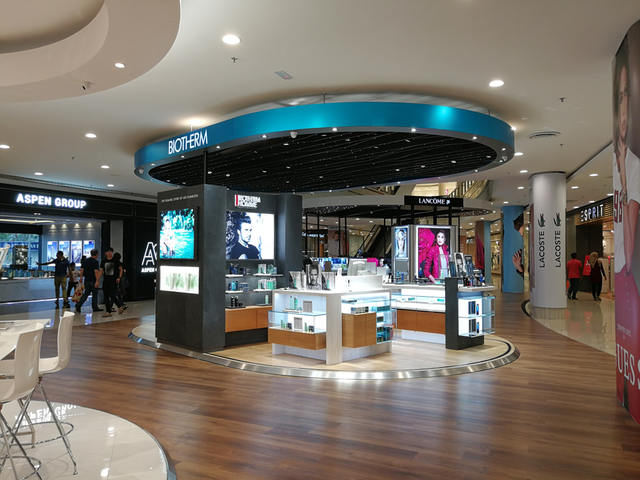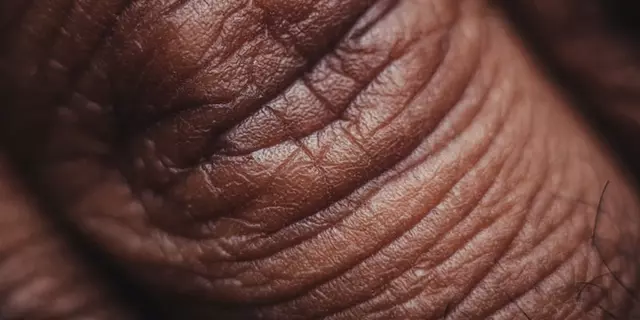Why is fashion industry obsessed with skinny bodies?

The fashion industry has long been criticized for its unhealthy obsession with slim figures. The fashion industry has been held responsible for setting unrealistic body expectations for women, which has led to a variety of mental health issues such as low self-esteem and eating disorders. In recent years, the fashion industry has begun to make efforts to become more inclusive and diverse in its representation of body types. However, the unrealistic standards of thinness still remain present in the industry, and the impact of this obsession is still felt by many.
The fashion industry’s emphasis on thinness has had a profound impact on how women view themselves and their bodies. It has been found that exposure to images of slim models leads to increased dissatisfaction with one’s own body image and can lead to eating disorders and other mental health issues. This pressure to conform to an unrealistic ideal of thinness has also been linked to a decrease in self-esteem among many women.
The obsession with thinness in the fashion industry also sends a message to the general public that thinness is the only acceptable body type. This sends a damaging message to women who may not fit the ideal body type, and it perpetuates the idea that thinness is the only way to be attractive and desirable. This further contributes to the unhealthy body image issues that many women struggle with.
The fashion industry’s obsession with thinness has had a significant impact on the mental health of many women. It is important for the industry to continue to make efforts to become more inclusive and diverse in its representation of body types, and to send a message that all body types are worthy of respect and appreciation. Only then can we begin to combat the unrealistic body expectations that have been perpetuated by the industry, and start to create a healthier relationship with our bodies.
The fashion industry has long been criticized for promoting an unhealthy and unrealistic body image. From the thin, nearly-unattainable body type that is typically seen in fashion magazines, to the lack of diversity when it comes to models, it’s no surprise that the fashion industry is obsessed with skinny bodies.
One of the main reasons why the fashion industry is so focused on thin bodies is because of the media. Media outlets such as magazines and television often present unrealistic body types and standards that are nearly impossible to attain. This can lead to unhealthy body image issues, particularly among younger people who may be more influenced by what they see in the media.
The fashion industry also promotes unhealthy body image by using airbrushing and other digital manipulation techniques to make models look even thinner than they already are. This is not only misleading, but it can also lead to a distorted view of beauty and the human body.
Furthermore, the fashion industry has been criticized for its lack of diversity. Many models are of a similar body type, which can lead to the idea that there is only one type of “ideal” body. This can be damaging to people who don’t fit into this narrow idea of beauty.
The fashion industry’s obsession with skinny bodies is a real issue that needs to be addressed. By promoting more body diversity and using fewer digital manipulation techniques, the fashion industry can help create a healthier body image for everyone.
The fashion industry has long been criticized for its narrow and unrealistic representation of body shapes and sizes. For decades, the industry has been dominated by images of thin, tall, and toned models, making it difficult for people of all sizes and shapes to feel included. But why is the fashion industry so obsessed with skinny bodies?
One of the main reasons why fashion brands tend to favor thin bodies is because it's easier to showcase clothing on a thin frame. Clothes hang better and look more stylish on thin bodies, so thin models are seen as being more marketable. In addition, many fashion designers believe that thin models help to create an "aspirational" look, as they represent the ideal of perfect beauty that many people strive for.
Furthermore, the fashion industry is often driven by trends, and these trends can be cyclical. During certain periods, thin bodies may be the ideal, while during other times, a curvier silhouette may be in vogue. This means that designers are always looking for new and exciting ways to update their collections, and thinner bodies often provide them with the opportunity to do this.
Finally, the fashion industry is also influenced by cultural and societal norms. In many cultures, thin bodies are seen as being more attractive than larger bodies. As a result, fashion brands may be more likely to feature thin models in order to appeal to their target market.
Ultimately, the fashion industry's obsession with skinny bodies is rooted in a variety of factors, including trends, cultural norms, and the desire to create more marketable clothing. While the industry has made some progress in recent years, there is still much work to be done in order to ensure that all body shapes and sizes are represented.
The fashion industry continues to be criticized for its obsession with skinny models. This obsession has been around for decades, and it has caused many to question why the fashion industry favors such a limited body type. After all, it's not representative of the general population. So, why is the fashion industry so obsessed with skinny bodies?
To understand why the fashion industry is so fixated on skinny bodies, it's important to look at the history of the fashion industry. The fashion industry has always been rooted in a desire to push boundaries and create something new. It has been influenced by many different cultures and trends throughout the years, but one thing has remained the same: the ideal body type. For decades, the fashion industry has favored slim, tall, and toned models to showcase its garments. This preference has been perpetuated by the media and advertising, which has perpetuated a standard of beauty that is hard to achieve for many.
The fashion industry's focus on skinny models has also been driven by the desire to appear sophisticated and high-end. Skinny models are seen as the epitome of elegance and glamour, and so the fashion industry has sought to feature them in its campaigns and editorials. This has also been driven by the idea that skinny bodies are more attractive and desirable, which has been a long-standing notion in the fashion industry.
Overall, the fashion industry's obsession with skinny bodies is rooted in its history, the media, and our culture's beauty standards. It has perpetuated an ideal body type that is hard to achieve and has caused many to feel inadequate. While it may not be possible to completely change the fashion industry's standards, there is still hope that more diverse body types will be seen in the industry in the future.
It's no secret that the fashion industry is obsessed with skinny bodies. From the clothes they create to the models they hire, it's clear that the fashion industry values thin bodies above all else. But why? What drives the fashion industry's obsession with skinny bodies?
One explanation is that the fashion industry is a reflection of our society's obsession with thinness. We live in a culture that values thinness and shames those who are overweight or don't fit into society's narrow beauty standards. This attitude is reflected in the fashion industry, where thin bodies are seen as attractive and desirable. By hiring thin models and creating clothing for thin bodies, the industry is reinforcing these societal ideals.
Another reason for the fashion industry's obsession with skinny bodies could be its desire to stand out and make a statement. Skinny models are often seen as more striking and eye-catching than those with fuller figures. This makes them desirable to fashion designers and brands, who are looking to make an impact and attract attention with their clothes and campaigns.
Finally, there's the financial aspect. Skinny models are often seen as more marketable and saleable than those with fuller figures. This means that fashion brands are more likely to invest in these models, as they can be used to promote their products and help generate more sales.
Ultimately, the fashion industry's obsession with skinny bodies is rooted in our society's attitude towards thinness, the industry's desire to make a statement, and its financial interests. While it's understandable why the industry has such an obsession, it's important to remember that all bodies are beautiful, regardless of shape or size.
Xander Fontaine

Hi, I'm Xander Fontaine, a renowned expert in the world of fashion and beauty. With years of experience as a stylist, I have a keen eye for the latest trends and timeless classics. My passion for writing has led me to share my knowledge through articles, blogs, and editorials, helping others elevate their personal style. I believe that fashion and beauty should be accessible and enjoyable for everyone, and I'm committed to spreading that message with my work.
View all posts by: Xander FontaineWrite a comment
Categories
RECENT POSTS
What kind of clothes should you wear to the cinema?
When heading to the cinema, it's all about comfort and practicality. It's best to opt for loose-fitting clothes like jeans, t-shirts, or even sweats, to ensure you're relaxed during the movie. Since cinemas are often air-conditioned, bringing a light jacket or sweater is a smart idea to stay warm. Opt for darker clothes to reduce light reflection and avoid distracting others. Lastly, bringing a large scarf or blanket can double as an extra layer of warmth and comfort.
What clothes to buy in Spain?
In Spain, fashion is a big deal and shopping for clothes can be a thrilling experience. The country is known for its quality leather items, so consider picking up some shoes or a classic leather jacket. Traditional Spanish attire like Flamenco dresses or Matador suits can be unique souvenirs. Also, don't miss out on high street fashion from Spanish brands like Zara, Mango, and Desigual. Lastly, their artisanal clothes and accessories are a real treasure to look for.
What is your favorite luxury skincare brand? Why?
As a guy who's serious about skincare, my absolute top-tier, go-to luxury brand is La Mer. Now, I know what you're thinking - "La Mer? Isn't that a little lavish for a regular Joe like me?" Well, sure, it's a bit of a splurge, but believe me, it's worth every penny. Their products are like a refreshing dive into a pool of youthfulness. So if you ask me why I love La Mer, I'd say it's because they make my skin feel like a million bucks without me needing to rob a bank.
Do the kiosks in the mall actually turn a profit?
As a frequent mall-goer, I've always wondered if the kiosks scattered throughout actually turn a profit. After doing some research, I found that these small-scale businesses can indeed be profitable, especially when they sell in-demand products or services. However, kiosk owners need to account for factors such as high rent costs and competition with larger retailers. Ultimately, the success of a mall kiosk depends on the entrepreneur's ability to effectively manage their business and adapt to the ever-changing retail landscape. So, next time I stroll through the mall, I'll have a newfound appreciation for these small but mighty businesses!
How to cover broken skin with makeup?
Makeup can be used to cover broken skin with some careful application techniques. The first step is to clean the area thoroughly and apply a thin layer of moisturizer. A green-tinted concealer should be applied over any redness. A light foundation should then be applied to even out the skin tone before using a thicker concealer to blend everything together. Finally, a light dusting of powder should be used to set the makeup in place. Keywords: broken skin, makeup, moisturizer, concealer, foundation, powder.





